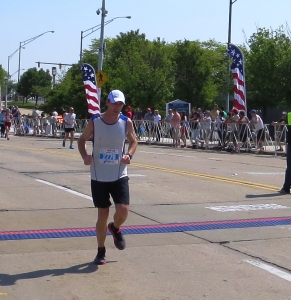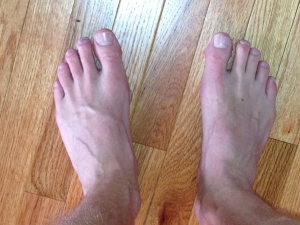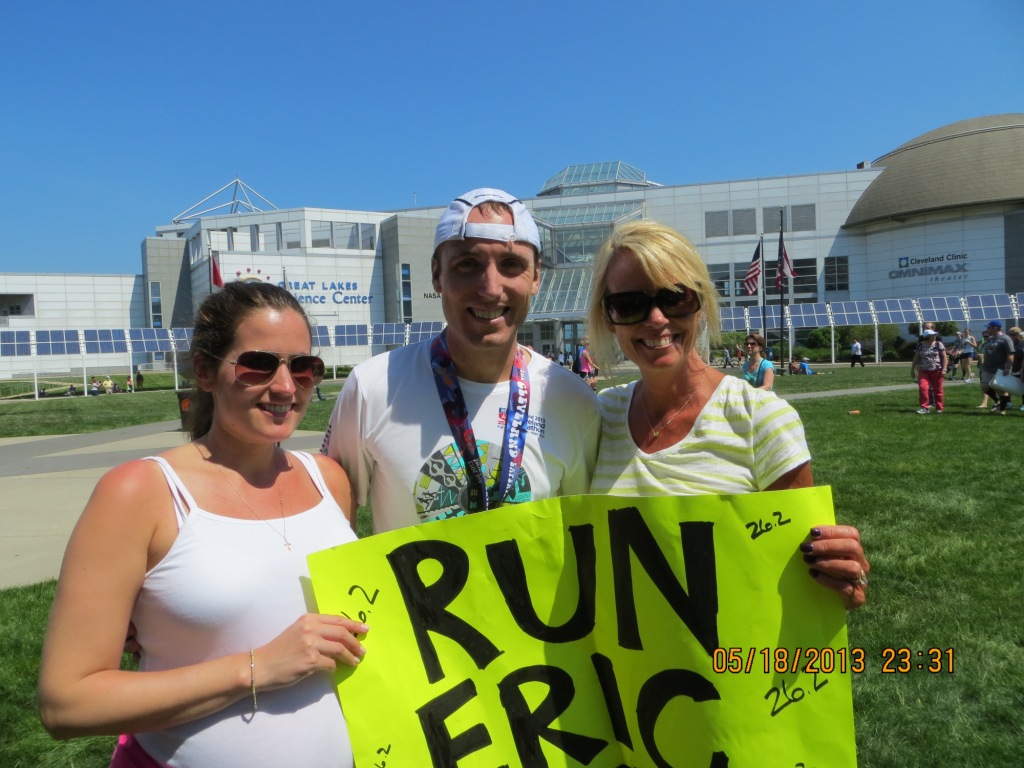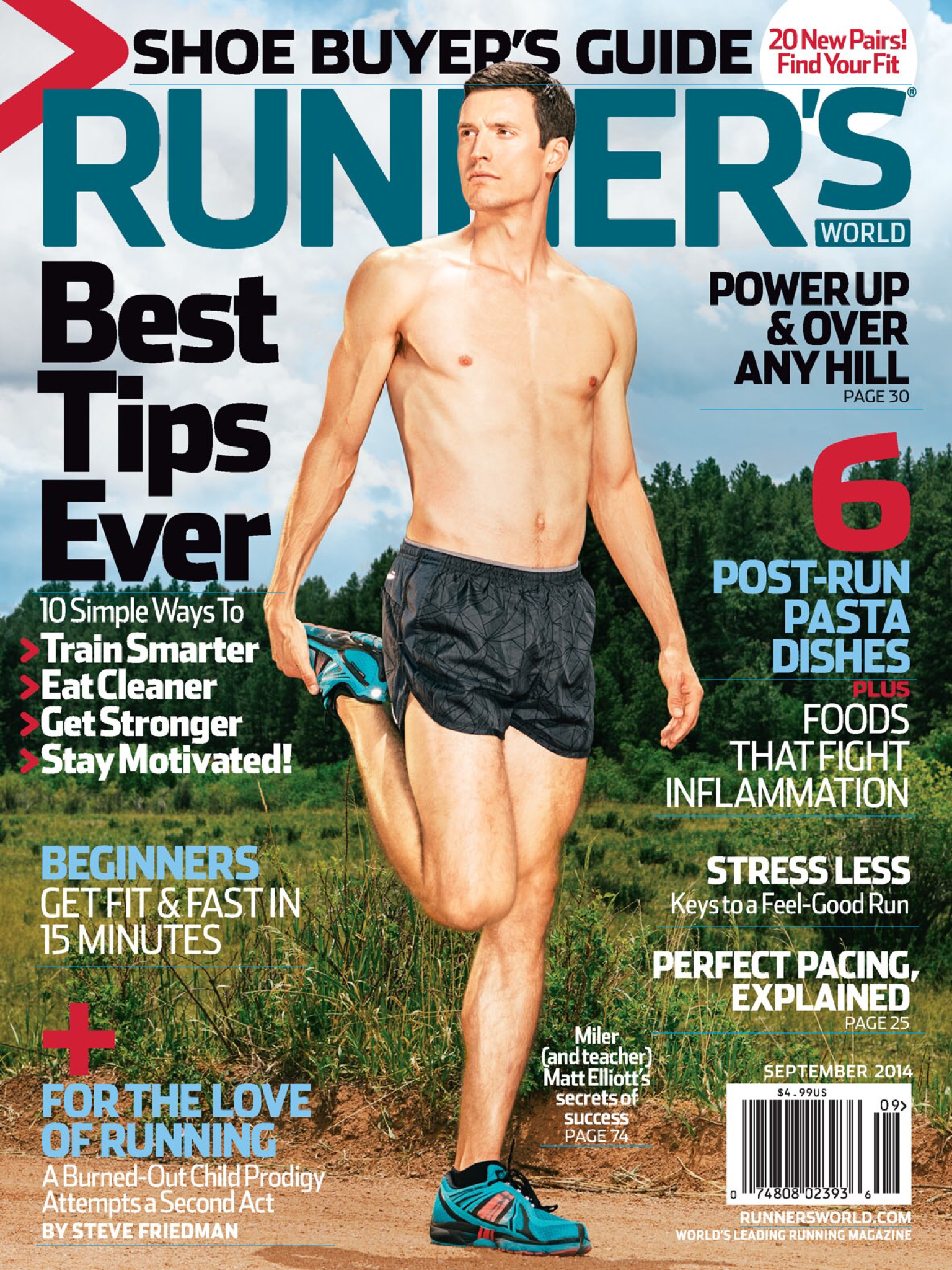Resolving Knee Pain by Learning Proper Form: Eric’s story of transitioning to a minimalist shoe.

I just started my running career in early 2012 (my wife got me into the sport) and my first race was the Cleveland Half Marathon 2012. I had a number of nagging chronic injuries related to overtraining and improper form. Initially the problem was my knees. I had pain on the outside of my knees and what I thought was IT band issues. I literally would have to ice my knees after every run and took a lot of ibuprofen to ease the pain. I kept running and even ran the half marathon with two compression sleeves on my knees. Due to these issues I bonked early on in the race but stillfinished. I was running in Mizuno Wave Riders which offer a lot of cushion and stability. I know now how these shoes cause heel striking and improper form. I never thought about form but when I did try to go faster I would do so by increasing stride length. Not a good idea.

Still enjoying running, later in 2012 I decided to register for the Towpath Half Marathon in the fall. My knees were getting a little better but now my feet were having issues. I had pain on the top of my foot and significant pain in my Achilles. I didn’t know if it was plantar fasciitis or some other tendinitis. My first step in the morning was often painful and I purchased a special sleeve to wear on my foot while running or even when sleeping. I felt discouraged because I didn’t want to give up the sport I was enjoying so much due to injury.
I met with you in January 2013 and you believed my injuries were due to overtraining and improper form. We discussed proper form, training with a heart rate monitor, and transitioning to minimalist shoes to strengthen the foot.
After we met, per your recommendations I read your Guide to Running in Minimalist Shoes. I also bought and read all of Phil Maffetone’s Big Book of Endurance Training which I loved. I invested in a heart rate monitor to go with my Garmin watch and started running barefoot slowly and carefully on my treadmill for a portion of my runs. For example, I would run .25 miles barefoot slow and then put on my shoes and run 2 more miles but with proper form. I gradually increased this until I believe I was running about a mile barefoot. Eventually I invested in a pair of Mizuno Evo Cursoris (zero drop, minimal cushioning) and Brooks PureDrift (4 mm drop, minimal cushioning) shoes which I have done nearly all of my 2013 runs in to date. I trained using Maffetone’s 180-age heart rate formula with no tempo runs. I kept all my runs at a heart rate of 152 or lower. My speed improved at the same heart rate and I tracked this with the MAF test (taking about 3 of them, 1 a month). Best of all I was pain free, taking no ibuprofen and my feet and legs were noticeably stronger.
Form-wise, I made sure to lean forward while running, I counted 90 steps for every 30 seconds until it was second nature, and landed on my forefoot/midfoot instead of my heel.
Initially I planned to run the Cleveland or Cincinnati Half Marathon for my 2013 spring race. Feeling good and pain free, I decided halfway into my training to “upgrade” to the Cleveland Full Marathon, my first 26.2 adventure. I increased my weekly mileage the best that I could given the time constraints from when I decided to go for the Full marathon and not wanting to risk injury by increasing too rapidly. My weekly mileage peaked at 46 before it was time to taper for the race. Throughout the 18 weeks of training I took no ibuprofen and was in basically no pain other than calf muscle soreness here and there.
I ended up running my first marathon in 4:00 exactly. Overall I am thrilled with this result when I think about how far I have come in a year since last year’s Cleveland Half. Through 30k (about 19 miles) I actually averaged a 8:32 mile and was on pace for about a 3:45 marathon. However, I think the hot weather plus my lack of endurance (initially only training for a half) got the best of me and I had to slow considerably after mile 20. I am two days post race as I write this and I am pretty much pain free other than a leg muscle stiffness. My feet literally have no issues at all. I ran the marathon in the Saucony Kinvara, which has a little more cushion and a 4mm drop, but no stability support.
I am excited about my progress and hope to continue to improve and maybe qualify for Boston someday (if I can find the time to run enough weekly miles). I really appreciate your help in providing and pointing me toward resources to help educate myself and make me a better runner. I enjoy reading your blog and twitter posts (@endre55). Thanks again.
Eric Endress
Age 28
Sagamore Hills, OH
Save up to 70% Off New Balance Shoes and Apparel at Joe’s New Balance Outlet. Huge Selection!
Free Shipping on all orders over $75!

Related Posts
-
 The Most Effective Exercises to Develop Gluteus Muscles and Hip Strength for Running
No Comments | Feb 3, 2018
The Most Effective Exercises to Develop Gluteus Muscles and Hip Strength for Running
No Comments | Feb 3, 2018 -
 Transitioning to a Minimalist Shoe: Val’s story of successfully overcoming chronic knee pain.
No Comments | Jul 11, 2013
Transitioning to a Minimalist Shoe: Val’s story of successfully overcoming chronic knee pain.
No Comments | Jul 11, 2013 -
 4 Quick Fixes for Your Jacked Up Feet
No Comments | Aug 10, 2016
4 Quick Fixes for Your Jacked Up Feet
No Comments | Aug 10, 2016 -
 Focusing on Pace
No Comments | Aug 26, 2014
Focusing on Pace
No Comments | Aug 26, 2014
About The Author
Dr. Nick Campitelli
Dr. Campitelli is a podiatrist in Akron, OH specializing in foot and ankle surgery with an interest and enthusiasm for running as well as helping runners with injuries. For the past several years he has been treating running injuries in patients by fixing their form and transitioning them to minimalist shoes. Having treated runners with all types of injuries through conservative measures with orthotics and shoe gear changes to reconstructive foot and ankle surgery, Dr. Campitelli has brought what works best and is most current to his practice as well as the Akron and Cleveland running communities.


